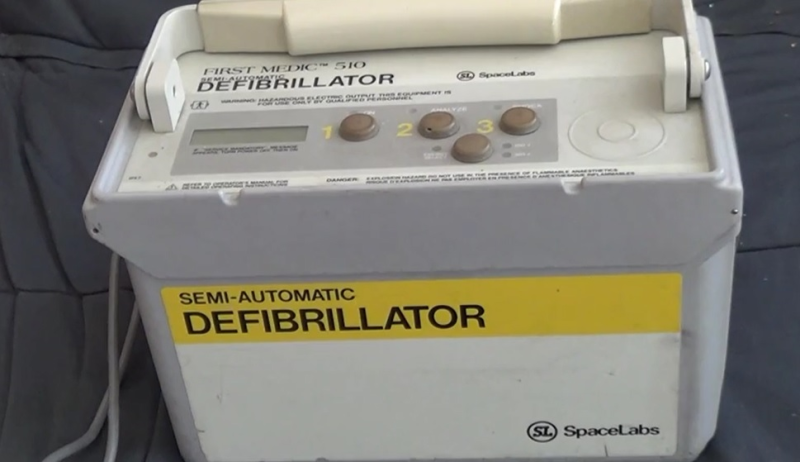The engineer was saved by the life of a device that he himself had developed.

Brian is new to computers. He cannot turn on the computer without any help. But he likes to play basketball. On one of the games his team was losing two points, the game came to an end, and they could not win. One of his players could well fall into the ring, but nothing else really could not do. After a successful shot, he got on the spot, although Brian screamed at him to run back to defense. But instead, the player suddenly fell face down. He had a heart attack.
This player was me, and since I tell this story, I survived this time. I survived thanks to one of my old projects, on which I worked as an engineer many years ago.
My name is Chris, and in the 70s I received an engineering degree from the University of Michigan. I was fond of bioengineering, computers, and dreamed of creating a cure for my diabetes.
')
After studying, I got into a big airline. There I was engaged in the automation of various tests, and created programs and devices for testing the electronics of airplanes before they could fly. But soon I left a big company with its bureaucracy and got a job at the hospital to work on a computer that analyzed the ECG. The system used pattern recognition and database to automatically generate diagnoses. I worked with the HP1000 / RTE computer, in which there were replaceable hard drives of 300 MB each and backup on tape.
The cardiologist with whom I worked invested in a small startup for the production of semi-automatic defibrillators that could be carried around by firefighters, police, etc. The faster you respond to a heart attack, the higher your chances of survival. At that time, only ambulance staff and other specialists could work with a defibrillator. But it took time for the specialist to arrive at the scene.
To create device algorithms, First Medic wanted to get the ECG data I was working on. I was their first consultant, and then I started working for them. The device had to be small, portable, provide shock up to 360 J, have batteries, did not burn during operation, tell the person working with him what to do next, read the patient's ECG and determine at what point the current should be applied. After work, the system should contact the hospital and transfer data there.
We made small cartridges that were inserted into the device. I made a device for reading and transmitting data via a serial port and / or modem, as well as software for managing data. All this had to be done on DOS-based computers with 640 KB of memory, since the police and firefighters did not have money for more advanced computer systems. I even had to write drivers for printers, and a system for displaying ECG graphics on a screen under DOS. I used C, Asm and many other languages.
Our first device was the First Medic 510 AED (automatic external defibrillator). The first to use it were firefighters in New York, San Diego, Alameda, and Vancouver. I really liked to introduce it and train people to use our device.
You may be surprised that red tape to change the laws in different states, so that they allow non-professionals to use such devices, sometimes took much more time than we spent on manufacturing the device itself. We had problems - for example, foreign investors who suddenly abandoned the project. We were left without money and we were bought by another company before the final release of the product. We asked for a salary, and as a result we received company shares. It was necessary not to throw them away - good wallpaper would come out.
But back to basketball.
Two teenagers rushed to my field and conducted cardiopulmonary resuscitation procedures with me. But, more importantly, they grabbed the AED machine, which was recently bought by the club, and which the staff had been trained to handle, and restarted my heart. Two weeks later I was discharged from the hospital. I was saved by two teenagers and a brand new AED.

And Brian is glad that I was brought back to life, because I am helping him turn on his computer!
Source: https://habr.com/ru/post/376347/
All Articles